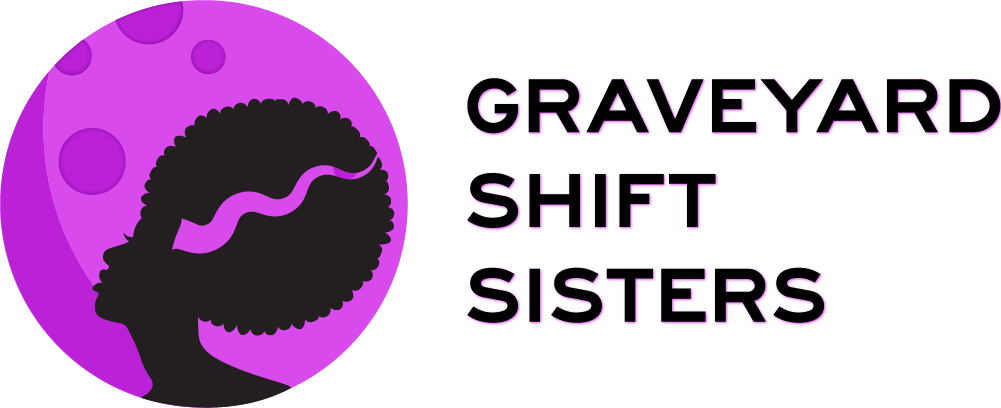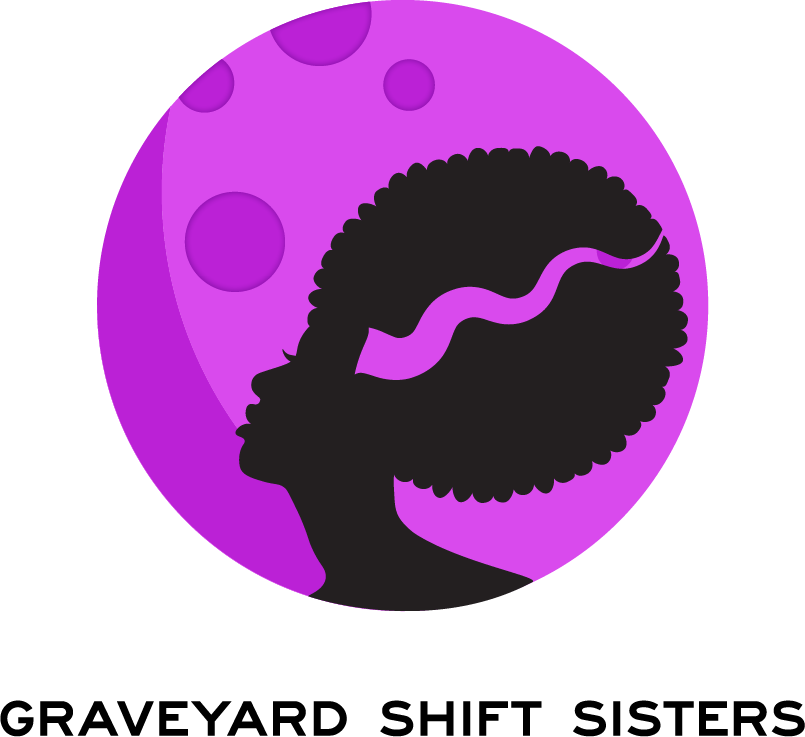Southern Gothic For Real: Visual Artist & Storyteller Zandashé Brown
Louisianian Zandashé Brown is in tune with the "mysticism, spirituality, and aggressive identity politics" of her native surroundings. Through the inspiration of experience, she values the implementation of Blackness, traditional African modes of magic/worship, women-centricism, and afrofuturism in her work as an artist. With just glimpses of her style, Zandashé is pulling out all manner of the mesmerizing and hypnotic, using disorientation and elements of a level of fear within the supernatual that is magnetc. Warm light and cold shadows are frenemies that suggest a black female body in a peaceful peril, but the story behind the inhuman movement speak on wounds that have never healed. Exterior shots of shrubs and streams aren't so much mysterious as they are a reclamation.
Admiring well-known titles of horror's past, Zandashé looks to re-imagine the subjective gaze as southern, Black, and female. Blood Runs Down is her latest project that does just that. The film explores a mother, Elise and daughter, Ana with the former enveloped in a jarring transition that forces the young girl to choose between saving her mother or saving herself. This story digs at the roots of generational trauma, Catholicism/Vodou, and what that has looked like for Black women in United States history, suggesting "what it means to have your life's demons waiting for you before you are even born."
Zandashé states, "horror films allow us to sympathize with the protagonist in anxious or frightening situations in a more immediate and desperate way than other genres," and where we can position people of color in these more nuanced, beyond good/evil roles, audiences will have the direct ability to encounter their humanity.
Reaching her Kickstarter goal has allowed Zandashé and her crew to be a part of the New Orleans Tricentennial Story Incubator where matching funds are granted and a slew of additional support including a screening at a premiere showcase event in the city. This weekend, Blood Runs Down participates in the Shorts Program at 2018's The Overlook Film Festival and in the thick of this prestigious screening, Zandashé speaks on how her Southern roots inspired her horror aesthetic, the allure of Voodoo, and much more in terms of the transformative power of the genre.
As a visual artist, what has been an inspiration to your style?
Southern Louisiana has been one of the biggest inspirations for my visual style. I’m from a really small town in the country and have memories stocked full of oak trees, spanish moss, and sugar cane fields. I’ve always thought they were beautiful but they also sort of creeped me out. From a very early age, I’ve associated them with slavery and death and fear and there was something eerie about being on land that probably looked just like this decades ago. These horrifying scenarios started playing out when I would look at certain trees or some of the old plantation houses. In the same sense, I saw something beautiful in that land - almost like I felt a type of ownership. I felt an ancestral presence there and still do when I go back home. It’s haunting in many ways.
New Orleans is also like a second home to me, and it has its own interesting history that I’ve found fascinating. I’ve always been intrigued by Voodoo and the media aesthetic of it. Learning more about the religion and other similar ones deriving from the African diaspora, it can be a little problematic. But there’s a type of power communicated in those images of possessed black women performing rituals that I’ve been attracted to.
And then I grew up on old horror films like HALLOWEEN, CARRIE, IT and the like. So the style and cinematography of those films sticks with me. I didn’t watch a lot of Disney films growing up, so John Carpenter and Wes Craven filled that role.
More recently, afro-futurist literature and art has been an inspiration. Octavia Butler became my favorite author after reading Kindred and my now favorite, Parable of the Sower. Her words are very magical and visual.
African spiritual practices are important to you and your work. How would you explain how southern Louisiana and the interweaving of Catholicism and Vodou/Voodoo makes its imprint on people and the aesthetic of the region?
Folks are funny out here. Like places in the Caribbean, most of your practitioners are actually Catholics as well. Historically, it has worked that way for both Black and White practitioners. So you definitely get a mesh of those elements. When enslaved Africans practiced Vodou, although they were allowed to openly in Congo Square for a time, at some point the Vodou deities, the Lwa, became syncretized with the Saints in the same way the Orishas were in Regla Ocha. So you could pray to the Virgin Mary, but really be praying to Erzulie, or in Regla, Yemaya. So there's that.
But also because of the appealing aesthetic, everyone now wants to claim a bit of Voodoo. You’ll see people describing the likeness of the famed Voodoo queen Marie Laveau to mirror themselves. With Voodoo comes power but also a sensuality that people desire, white and black, male and female.
Since gentrification is hitting New Orleans big time, you’ve got a lot of people from a lot of different places, most of them white, playing up on the Voodoo thing because it’s one of the first associations you have with the city. To me, it feels a little disrespectful because these practices are so deeply interwoven into the city and its long-time families. And frankly, it’s not something to be tampered with.
What does the Southern gothic sub-genre in film offer audiences that to this day, may be something they haven’t seen before on screen?
I think it has the power to offer them a look at race and class in the south and our history. It’s usually focused in some way on the past and the complicated ways that we’re linked and at odds in the south based on our identities, and have been for so long.
It’s also a genre and aesthetic that has lots of potential to play on generational change. The themes from a lot of these films deal with unresolved matters from decades before, revenge, and the like. What I wanted to explore with BLOOD RUNS DOWN was pain. The Southern Gothic aesthetic can be a sad, morbid one, although beautiful. There’s a sense of being stuck in a very particular time. I think the question to be answered is how do we escape it? I think afro-futurist elements can help answer that. And maybe we can’t escape the past in the south, or we don’t need to. A part of us will always remain in these settings, old images, on this land. So how do we honor and embrace that in real life and on the screen?
What was one of the first horror films that made you feel that same immediacy you contend that horror invokes in viewers to sympathize with the protagonist in a frightening situation?
Many people say IT was the first horror film that scared them half to death, but it was one of the first to make me cry. Watching it at a young age, I connected with the young characters and the simple reality that it was terrifying to be a kid sometimes. I felt that same tug watching the recent remake. I think that was one of the first movies that showed me horror had the potential to do more than frighten you. EVE’S BAYOU wasn’t quite a horror film but reminded me of one and made me realized these films also had the potential to be bittersweet and very, very beautiful. So I’m striving to do both of those things in my work.
Zandashé on IMDb / Twitter / Vimeo
Blood Runs Down - See The Kickstarter Video and find BTS glimpses on Instagram and Facebook
Promo Photo by Lee Laa Ray Guillory

